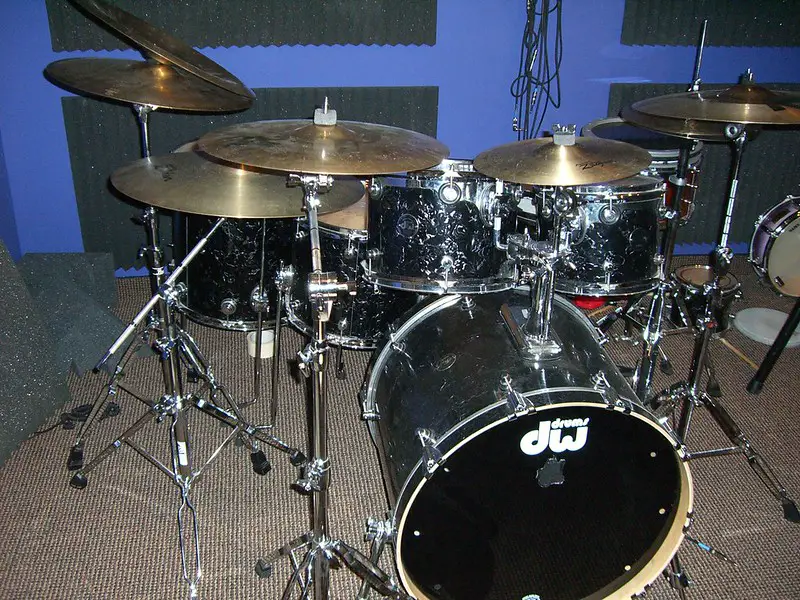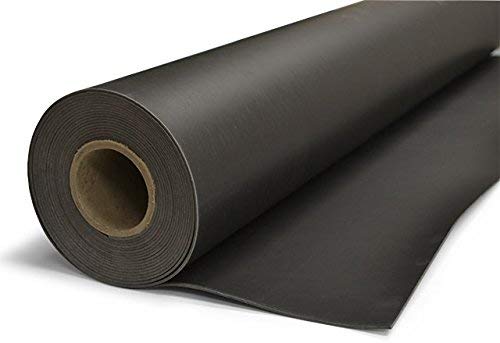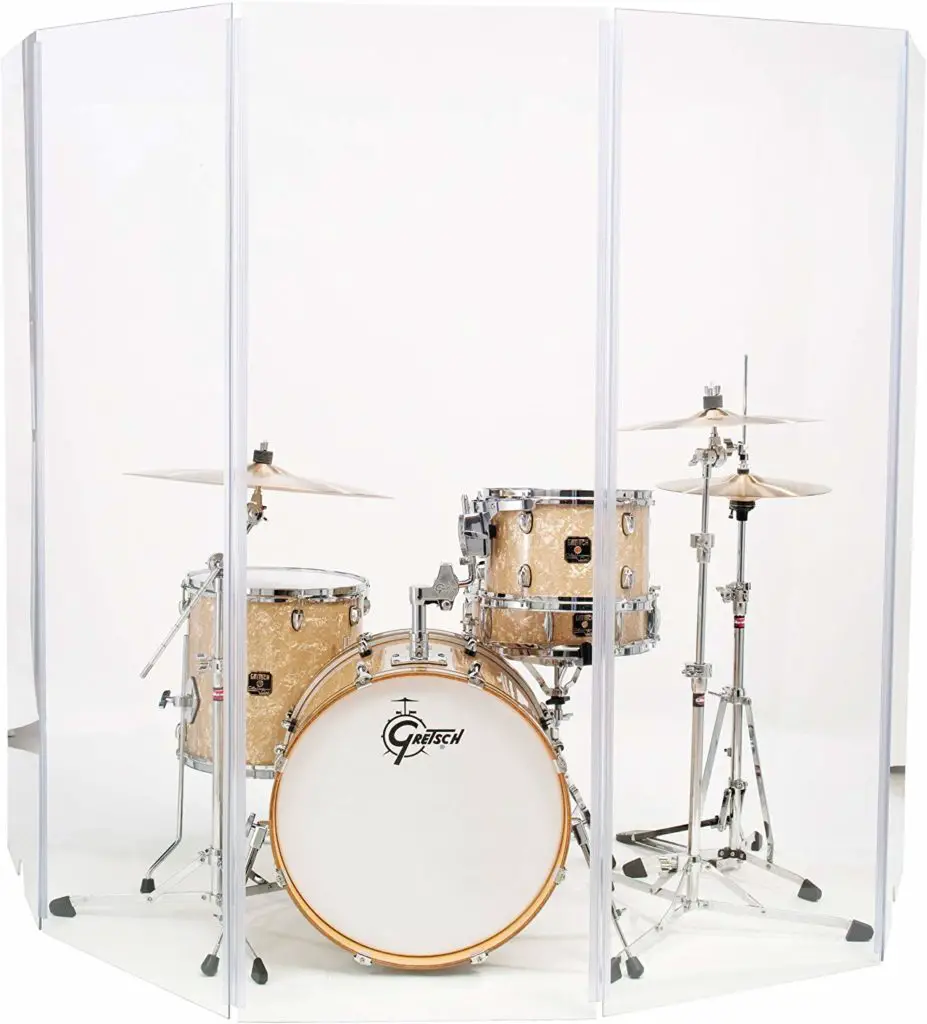playing drums is exciting and fun eh?. But how can you really enjoy your drums practice without annoying those around you?.
Unless you live in an isolated space or a big mansion all by yourself, they chances are that you are living in a house or apartment close to other people who can hear you whenever you hit the drums.
But does that mean you shouldn’t enjoy playing your drums because of neighbors?. I guess the answer is a big No.

Building a room that is completely soundproof for drums is very expensive and not economically feasible if you are only playing your drums once in a while. Maybe if you are using the space for professional purposes, that might be ok.
That being said, today we will look at how to soundproof a room for drums in a less expensive and easier way. Your soundproof drums room will not be completely soundproof, but the sound will be reduced drastically that your neighbors won’t be unhappy with you.
Science has shown that a drummer can generate sound between 110-120dB when playing loud. This amount of sound is enough to make someone lose their hearing if exposed to for long.
So, our whole aim is to reduce this amount of sound energy as much as possible. So that even if a person hears it outside the room, it won’t be loud. This will also give you peace of mind to play your drums during practice.
These drum room ideas are easy to implement and won’t take too much time. Plus, they are cost-effective than bringing professionals to do it for you.
Cheap Ways to Soundproof a Room for Drums and Drum Room Ideas
Below are some drum room ideas to help you reduce drum noise.
1. Seal All the Gaps and Cracks in the Room
The windows and doors are the biggest openings in the room and as such, they have the biggest gaps too. For ventilation purposes, it’s not good to have the whole room airtight.
But as sound travels through the air as well, it is better to seal all the visible gaps that let in or out the air in the room.
to seal the gaps and cracks in the window and door, you can use this weatherstripping tape to seal the gaps. This tape can be used as a door sweep as well. It is self-adhesive and does not require time or any sealant to stick to the door or window.
2. Hang Sound Absorption Sheet/ Dampening Blanket
These sound dampening blankets come a two-in-one sheet that acts as both sound absorber and sound barrier, creating a great option for treating windows and doors or anywhere soundproofing is necessary.
They are the least expensive way to stop drum noise from leaving the room. You can easily attach them to the door, window or wall with a hanging clip.
These sound absorption sheets may reduce sound levels by up to 60 percent. The other good thing about these sheets is, they are made of all-natural environmentally friendly material.
They are made in the USA and there are different colors of up to I think about 5 colors to choose from.
These sound deadening blanket would be great for the door. Doors can be a big problem when it comes to noise reduction.
These days, most of the doors we have in the homes are hollow core doors. Hollow doors are not dense enough to prevent noise from passing them. as the name suggests, they have a hollow core. Hanging a soundproof blanket on them will help increase their mass.
Check this article for more information on how to soundproof a hollow door. I went into more detail on how to reduce noise through them.
3. Install Drum Room Curtains
Soundproof curtains are versatile, you can use them in any part of the room. Maybe you are not into the blankets I mentioned above or you simply want to use a curtain instead of a blanket to reinforce the windows against the sound scaping through them, then the soundproof curtains are a great choice.
Blackout curtains will usually also be pretty effective at blocking sound but there are some drapes that specifically feature noise-reducing thermal insulation as well. I used this 3-in-1 soundproof curtain in my room and it did a fantastic job of reducing noise and blocking light.
4. Hang Mass Loaded Vinyl Mat
Mass loaded vinyl mat is a soundproof material that has high density and its good at soundproofing impact noise. Drum noise is an example of impact noise. Impact noise is generated when one object impacts another. In this case, its the drum stick used to hit the drum.
This sends out vibrational noise. The vinyl mat can be installed on the walls, ceiling or place on the floor under the room carpet, right under the drums. Other uses include; Automobiles, Machinery, Pipes, HVAC, pool pumps and more.
Mass loaded Vinyl mat is a good sound absorber and dampener. These mats are not very cheap though and not expensive either.

Mass Loaded Vinyl (MLV) is the professional choice when it comes to soundproofing. MLV contains heavy mass in minimal thickness making it the material of choice when it comes to blocking sound or noise and creating an acoustic barrier.
5. Install Acoustic Foam Panels on Walls and ceiling
when it comes to using acoustic foam panels or wedges you can’t go wrong with them. They are effective at airborne noise reduction. So if you have voices involved in the room. These will help.
You would often find these foams in recording studios. These days, there are many foam panels and wedges of different shapes, sizes and noise reduction levels available.
For better noise reduction, get ones that have a higher STC rating. The higher this number, the better the soundproofing.
The soundproof foam is good at reducing airborne noise. The more wall and ceiling space you cover the better noise reduction you will get.
They come packs, sizes, and colors. You can select different colors and mix them up to give you a decorative look. Depending on how much you are willing to invest, you will give good or better noise reduction.
At least strive to cover 25% of the walls and ceiling. I got these acoustic foam panels for my wall.
Step 6: Carpet the Floor
A carpeted floor has more ability to reduce noise than cement or wooden floors. A carpet is a sound absorber. It reduces the echoes and the impact noise moving around.
The denser the carpet, the better. It’s just like when you are walking around a floor that is not carpeted, your footsteps get louder than if the floor was carpet.
To soundproof the floor, it’s a good idea to invest in a thick carpet for the drum room floor. It is how to reduce drum noise on the floor.
7. Get a Soundproof Drum Rug
Placing a soundproof drum rug underneath the drumset will help absorb some of the noise. A soundproof drum rug is specifically designed with drums in mind.
You can get this drum rug for your set. It comes with a bag to help you transport it anywhere to use. The dimensions fit the drumset. This will also help put your drums in place when you hit them. Things like slipping or drum movement won’t be a problem anymore.
The rug should ideally be laid on top of a floor that is already carpeted. If your room isn’t carpeted, you’ll want to either install carpeting or cover the entire floor with rugs.
8. Get Soundoff Drum Mute Pak
SoundOff by Evans Drum Mute Pak provides a 95% volume reduction, so drummers can practice on their normal drum sets in the comfort of their own homes, without making noise.
From the beginner starting out in her bedroom after school to the seasoned drummer practicing in his basement studio late into the night, SoundOff drum mutes allow players to practice without having to worry about volume control.
the drum mutes sit directly on top of the drum head and do not drastically alter the drum’s feel. Constructed from durable rubber, these drum mutes can stand up to frequent practicing.
SoundOff is available in drumheads, drum mutes, cymbal mutes, and mute packs.
These drum mute paks are not necessarily going to soundproof the room, but the will help reduce the noise levels that the drummer is making. This way, you won’t have a lot of noise been produced by the drums.
9. Use a Soundproof Drum Booth/Shield
This acrylic drum shield is a bit pricy though. But it is one of the best and simplest solution to reducing drum noise in the room.
There are some affordable drum shields on Amazon that you should check out. Although it will block the noise going into every direction, it won’t be as effective in blocking the noise from going upward.
This one is, arguably, the quietest way of blocking the noise in your drum room. The other downside is that the musician can feel a bit entrapped.

Final Thoughts on Soundproofing Drums Room
I hope you found these tips on how to soundproof a room for drums helpful. These soundproofing techniques are generally employed by anyone who is looking to reduce noise levels leaving the room.
Investing in a completely soundproof room for your dreams is a big investment and not every one of us has that much money to use for such a project. But one thing I am sure of is the passion you have for playing drums.
That is why I experimented with lots of methods and came up with these soundproof drum room ideas to help you minimize your cost at reducing the noise generated from your drums.
Implementing these tips will greatly reduce the noise levels outside your practice room or space.
- How to Chew Quietly While Eating-Effective Tips - April 14, 2023
- Why is My Clutch Pedal Squeaking – Causes & Fixes - April 14, 2023
- Propane Tank Making Hissing Noise (Solved) - February 25, 2023
